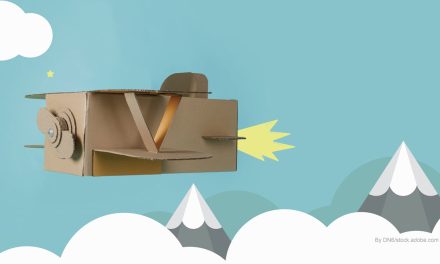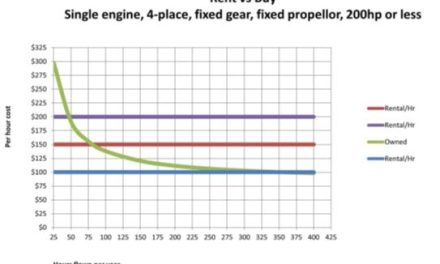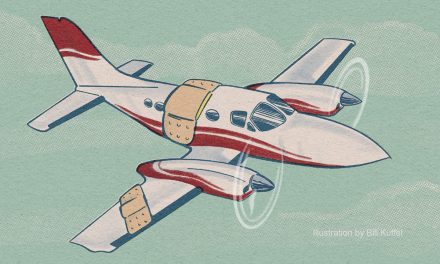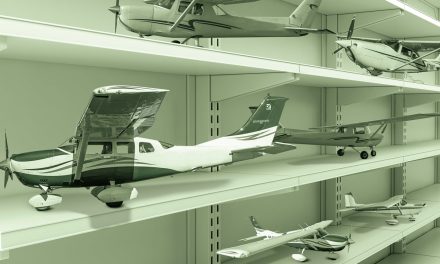
If you are like me, a week at EAA AirVenture in Oshkosh gets you all excited and motivated for a new airplane. I picked out a whole bunch of new flying machines I would like – and not just typical aircraft. There were a few electric VTOL (passenger carrying drones) I liked, too. Will technology and creativity ever stop? I hope not.
But whenever I start thinking about new aircraft, I also start thinking about what’s required to move up to a different aircraft. In my experience, the thought of moving up is more of an “ego” decision than a rational or practical choice. This year I talked about “ego” and not being able to buy insurance in one of my seminars. I also think the reality is it might not be ego that drives us, but expectations and emotion. We have the licenses and we have the desire, so why don’t we buy what we want? And an airshow is the perfect emotionally-charged place to shop for new aircraft.
I always want a bigger, faster, fancier “whatever it is” than I currently have and aircraft are no exception. But the problem with airplanes is the requirements for flying (not just insurance) are more difficult. It is very important to be able to fly the aircraft and be safe. I always remember this quote: “Flying is not inherently dangerous, but crashing is!”
Once I did a bit of research and it seemed the most dangerous time for a pilot is between 200 and 500 hours. Thought is confidence and perceived skill level is high – usually much greater than the actual pilot skill, hence the higher accident rate. Many a pilot can fly high-performance aircraft with very few problems and with very little dual. The lack of “skill” starts when the situation is not normal.
As discussed previously, insurance is a tradeoff. You pay a small amount of money to the insurance company for a bigger amount of protection… but the underwriters get to make a few requirements for their protection.
So, one way insurance underwriters reduce the accident rate is more training. Insurance underwriters ask for dual and solo time when the pilot is moving up the chain of aircraft. It is always surprising how many people throw a fit and try to find ways around the dual requirements. The requirements aren’t meant as a punishment for the new aircraft buyer (although many people think so). They are meant as a way for the insurance company to control their losses.
Side note: I don’t think the insurance company is as interested in you, personally, as they are in their loss ratios. Think about it. If they can reduce accidents/losses they are, in turn, helping the pilot become more proficient in that particular aircraft. I know it might seem like a stretch, but company self-protection can actually result in us being better pilots.
What the Pilot Gains
Let’s say you want to move from a single to a light twin. The insurance company will probably require somewhere between 10 and 15 hours of dual and your multi-license prior to solo. But they won’t stop there. They will require 10 hours of solo prior to carrying passengers. In reality, the average multi-license will take between seven and 10 hours of training and the check ride. The other three to five hours are to make sure they didn’t just train you to take the check ride. When I took my multi-training, I did a two-day training course with the check ride on the third day. I had five hours of dual prior to the check ride and the check ride took about an hour.
With a total of six hours, I had become a licensed multi-engine aircraft pilot. Sure, I could do the single engine routines. I followed the checklist and was able to do the correct procedures. Plus, I had an instructor or the examiner in the aircraft during that time. If the aircraft really failed and I had my family or friends in the aircraft and the winds were really blowing and the rain was splattering on the windshield and, not to mention, there was a little ice building up – I’m not sure I would be qualified to do the right thing with just six hours. To be a true multi-pilot takes practice and training, more than just the hours for the check ride. That’s why it’s important to remember your license or rating is just the first step to learning.
The same thing is true for retractable gear aircraft or tail wheel aircraft. You can get the tail wheel endorsement in very few hours. But I would still get nervous when I landed my Smith Miniplane in a crosswind. And I never got used to pavement. It takes time (hours) to be good and it takes practice (hours) to stay good. Malcolm Gladwell, in his book Outliers, says you need 10,000 hours to be an expert.
Let’s be honest, when the underwriter asks for 15 hours of dual, they know the first few hours are orientation time – time for the instructor and the pilot to get to know the aircraft and each other. The underwriters also realize that just getting dual in the logbook doesn’t mean the student really knows how to fly. Many a new aircraft buyer takes delivery of the new aircraft in a location that requires a long flight home. This is a great time to get dual. Cross-country is a great experience, but it doesn’t provide the same training as continual take-offs and landings or single engine approaches.
Many a pilot has landed gear up because the checklist was not in their hand – let alone ingrained in their mind! Repetition and practice help develop the right habits and procedures. And the only way to get these things permanently etched is to practice. Most pilots don’t practice unless they are required. How many of you actually practice manual gear extension and/or single engine work? The underwriters are one way the pilot is required to practice. Okay, so it’s not the best way to make us practice, but if the requirements are for recurrent annual training, at least they know we are practicing a little bit more than normal.
Even 10,000 hours in an aircraft, doesn’t mean accidents don’t happen. I have seen that repeat itself over and over with gear ups, ground loops, nose overs and all with pilots that had years of experience and tens of thousands of hours.
The Meaning of “Solo”
Now, let’s talk about “solo.” It’s an important word.
Either you fly solo because nobody wants to fly with you (I’ve been there), or because someone makes you. Why do the underwriters require solo? So, you can’t ask for help!
My first solo flight in my Smith Miniplane (the Smith is a 17-foot span, 15-foot long, single place sport biplane) was a great learning experience. Takeoff and flying was a cinch. Landing – that was a different story. I wish I had done a number of approaches in a two place Pitts (as the underwriters requested) prior to my solo flight. On downwind at 100 mph, 2000 rpm and the wind whipping in my face, I wished I had insured the aircraft and gotten the required dual. Even though I practiced approaches in my head, the actual solo flight was quite a nerve-wracking experience. Solo in a new aircraft forces you, the one and only pilot, to make all the decisions. No asking for advice, or tips. Just flying. If you are not comfortable with the aircraft and all its habits, solo flight will tell you what you need to work on.
That’s why the underwriters require it!
I know what you’re thinking. No one will know if I have a friend with me. Don’t try to be sneaky. Solo means solo. If you are carrying passengers and you have an accident, sorry, you just wasted your premium. The coverage is void. If you have an accident down the road, say after you have about 50 hours in the aircraft and the claims adjuster finds out you never put the solo flight or the required amount of dual in the logbooks, strike two, sorry again.
There is a twist to this. A few companies with language that says something like, “10 hours dual and no passenger coverage until you have 20 total logged hours in the same make and model.” I guess technically, that means you could get ten dual and carry a passenger during the ten solo to meet the 20 hours total. But, there would not be any insurance coverage for the passengers. I do think there could be confusion in settling a claim as far as the interpretation in that language. My thoughts; do the solo as solo, no passengers. And remember, I am not a lawyer, with the FAA or an underwriter.
Last, make sure you meet the requirements and keep records of the historic flights. If not, your aviation insurance coverage could be non-existent. As always, if you have questions about the requirements, you can’t find an instructor or whatever, call your broker. Ask them to work with the underwriter to help come up with a solution. Even if it doesn’t always end up the way you want, it might be the best for you.
A Few Final Considerations
- Dual means with a qualified CFI. That means the CFI meets the requirements to be a CFI in that particular make and model of aircraft.
- Sometimes dual can be in a similar (not exact) model, say a Cessna 120 if you are buying a Cessna 140 or maybe a Piper Cherokee 180 in place of the Piper 140. Ask the broker to clarify to be certain.
- Sometimes there is not a qualified CFI around. For example, a few companies require a CFI with five hours in the same make and model. But what if you are buying a Cessna 175? It is very difficult to find a qualified CFI. You will need to have the broker work with the underwriter to get a CFI qualified.
- If a certain amount of dual is required, that is what needs to be done. Just because the CFI says you are qualified, even if you haven’t met the required time, you didn’t meet the underwriter’s requirements.
- Solo means solo, no one else in the plane.





